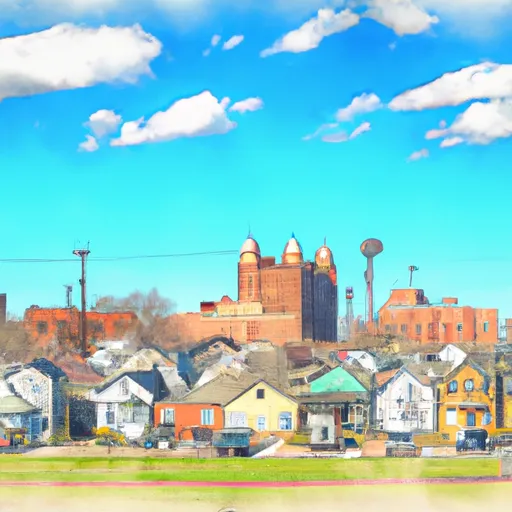-
 Snoflo Premium
Snoflo Premium
Get unlimited access to all our content
With no Ad interruptions! - Start Your Free Trial Login with existing account
Hyannis
Eden Index
Climate
8.5
•
Recreation
0.6
•
Community
•
Safeguard
3.6/10

Hyannis, Nebraska is a small town located in Grant County in the western part of the state. The town experiences a semi-arid climate with hot summers and cold winters. Summers are characterized by temperatures averaging around 90°F (32°C) with occasional thunderstorms. Winters are cold, with temperatures dropping below freezing and occasional snowfall. Spring and fall seasons are mild and pleasant.
Hydrologically, the town of Hyannis is situated near the Nebraska Sandhills, known for its vast grass-covered sand dunes and abundant Ogallala Aquifer. This aquifer provides a vital source of water for the region, supporting agriculture and other activities.
Despite its small size, Hyannis offers several outdoor recreation opportunities. The town is surrounded by the beautiful Nebraska Sandhills, which attracts outdoor enthusiasts with activities such as hiking, birdwatching, and nature photography. Additionally, the area offers opportunities for hunting, fishing, and camping, with several lakes and reservoirs nearby. The nearby Crescent Lake National Wildlife Refuge provides a habitat for diverse wildlife and offers opportunities for wildlife viewing and hunting. Overall, Hyannis provides a serene and picturesque setting for nature lovers seeking outdoor adventures.
What is the Eden Index?
The Snoflo Eden Index serves as a comprehensive rating system for regions, evaluating their desirability through a holistic assessment of climate health, outdoor recreation opportunities, and natural disaster risk, acknowledging the profound impact of these factors on livability and well-being.
Climate Health Indicator (CHI): 8.5
Hyannis receives approximately
491mm of rain per year,
with humidity levels near 65%
and air temperatures averaging around
9°C.
Hyannis has a plant hardyness factor of
5, meaning
plants and agriculture in this region thrive during a short period during spring and early summer. Most
plants will die off during the colder winter months.
By considering the ideal temperature range, reliable water supplies, clean air, and stable seasonal rain or snowpacks, the Climate Health Indicator (CHI) underscores the significance of a healthy climate as the foundation for quality living.
A healthy climate is paramount for ensuring a high quality of life and livability in a region, fostering both physical well-being and environmental harmony. This can be characterized by ideal temperatures, reliable access to water supplies, clean air, and consistent seasonal rain or snowpacks.
Weather Forecast
Streamflow Conditions
Loup
Area Rivers
Loup
Snowpack Depths
Loup
Reservoir Storage Capacity
Loup
Groundwater Levels
Recreational Opportunity Index (ROI): 0.6
The Recreational Opportunity Index (ROI) recognizes the value of outdoor recreational options, such as parks, hiking trails, camping sites, and fishing spots, while acknowledging that climate plays a pivotal role in ensuring the comfort and consistency of these experiences.
Access to outdoor recreational opportunities, encompassing activities such as parks, hiking, camping, and fishing, is crucial for overall well-being, and the climate plays a pivotal role in enabling and enhancing these experiences, ensuring that individuals can engage in nature-based activities comfortably and consistently.
Camping Areas
| Campground | Campsites | Reservations | Toilets | Showers | Elevation |
|---|---|---|---|---|---|
| Arthur Park | 10 | 3,641 ft |
Catastrophe Safeguard Index (CSI):
The Catastrophe Safeguard Index (CSI) recognizes that natural disaster risk, encompassing floods, fires, hurricanes, and tornadoes, can drastically affect safety and the overall appeal of an area.
The level of natural disaster risk in a region significantly affects safety and the overall livability, with climate change amplifying these risks by potentially increasing the frequency and intensity of events like floods, fires, hurricanes, and tornadoes, thereby posing substantial challenges to community resilience and well-being.
Community Resilience Indicator (CRI):
The Community Resilience Indicator (CRI) recognizes that education, healthcare, and socioeconomics are crucial to the well-being of a region. The CRI acknowledges the profound impact of these elements on residents' overall quality of life. By evaluating educational resources, healthcare accessibility, and economic inclusivity, the index captures the essential aspects that contribute to a thriving community, fostering resident satisfaction, equity, and social cohesion.

